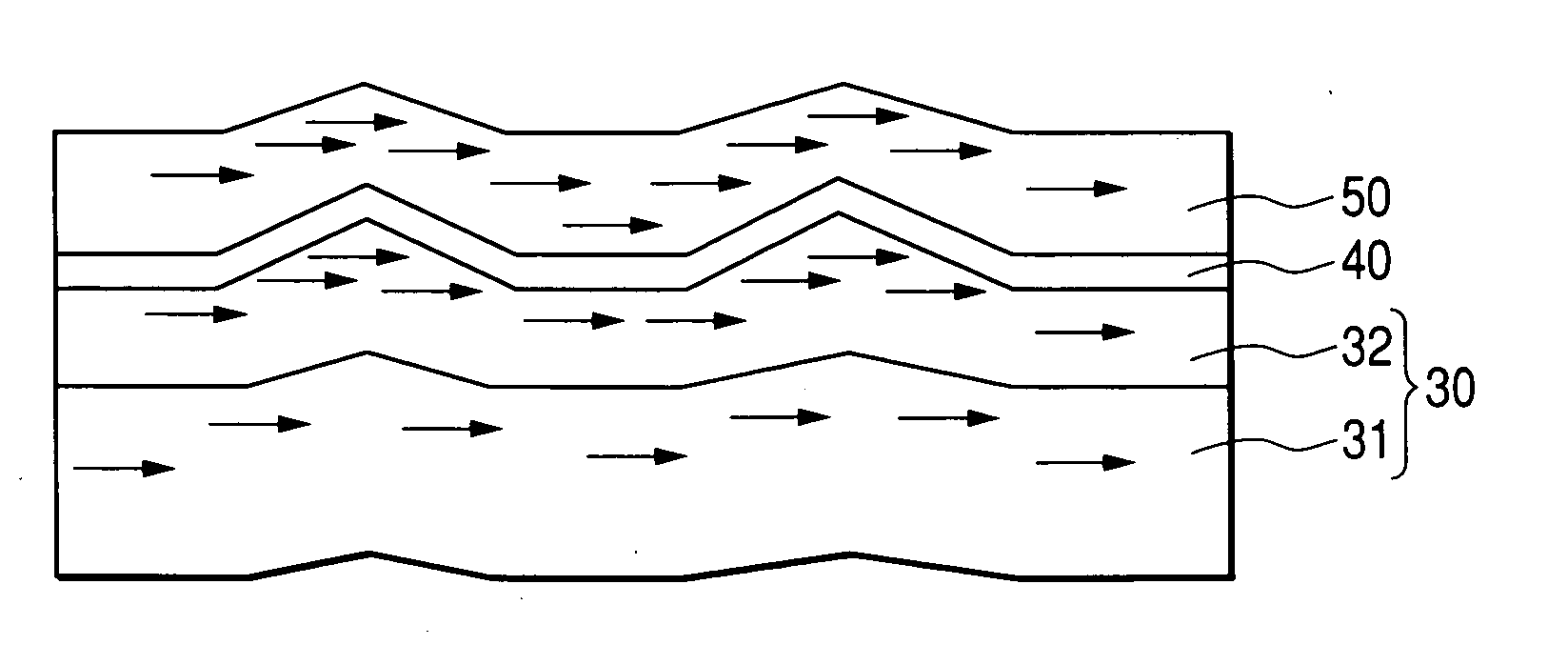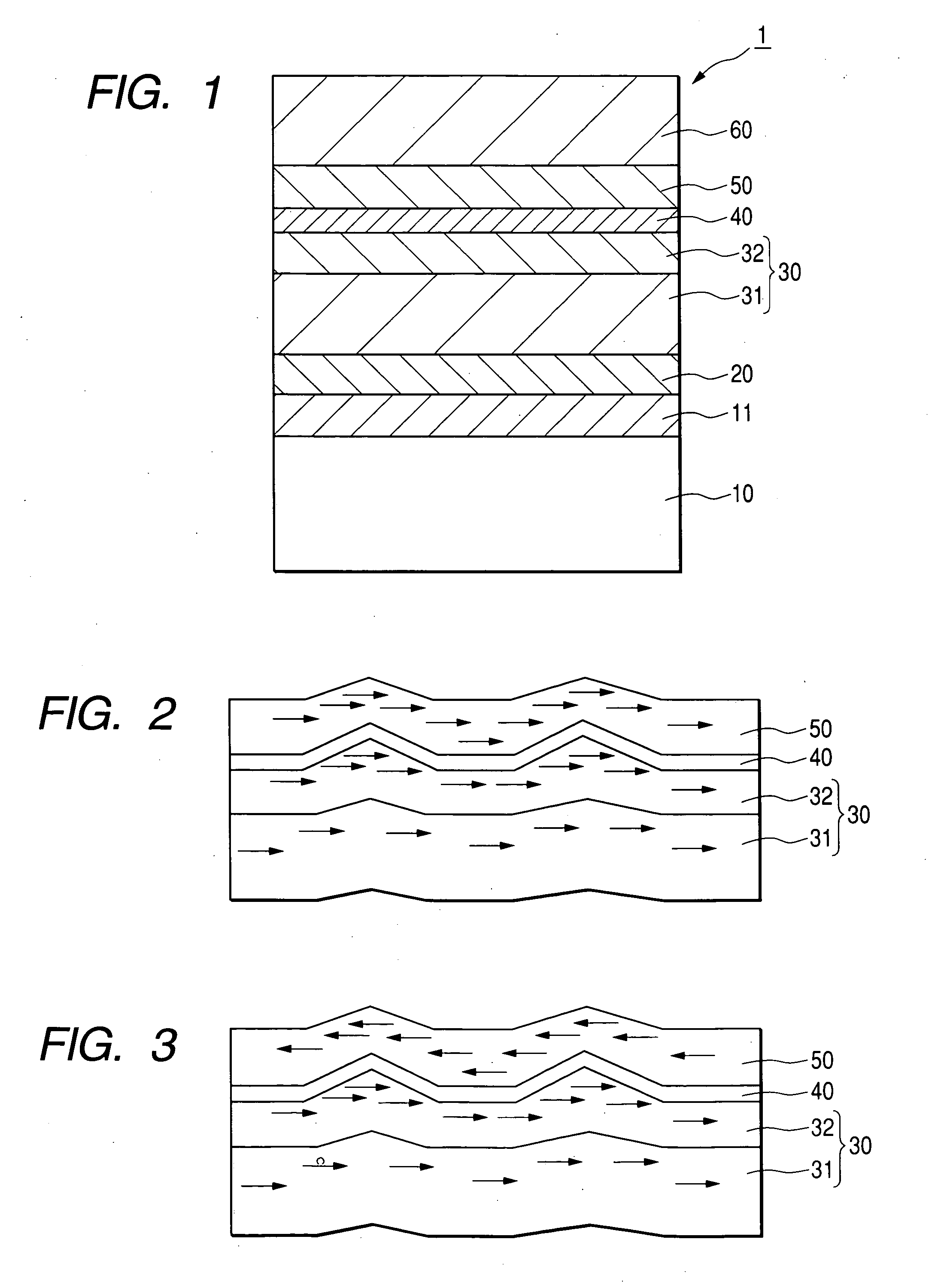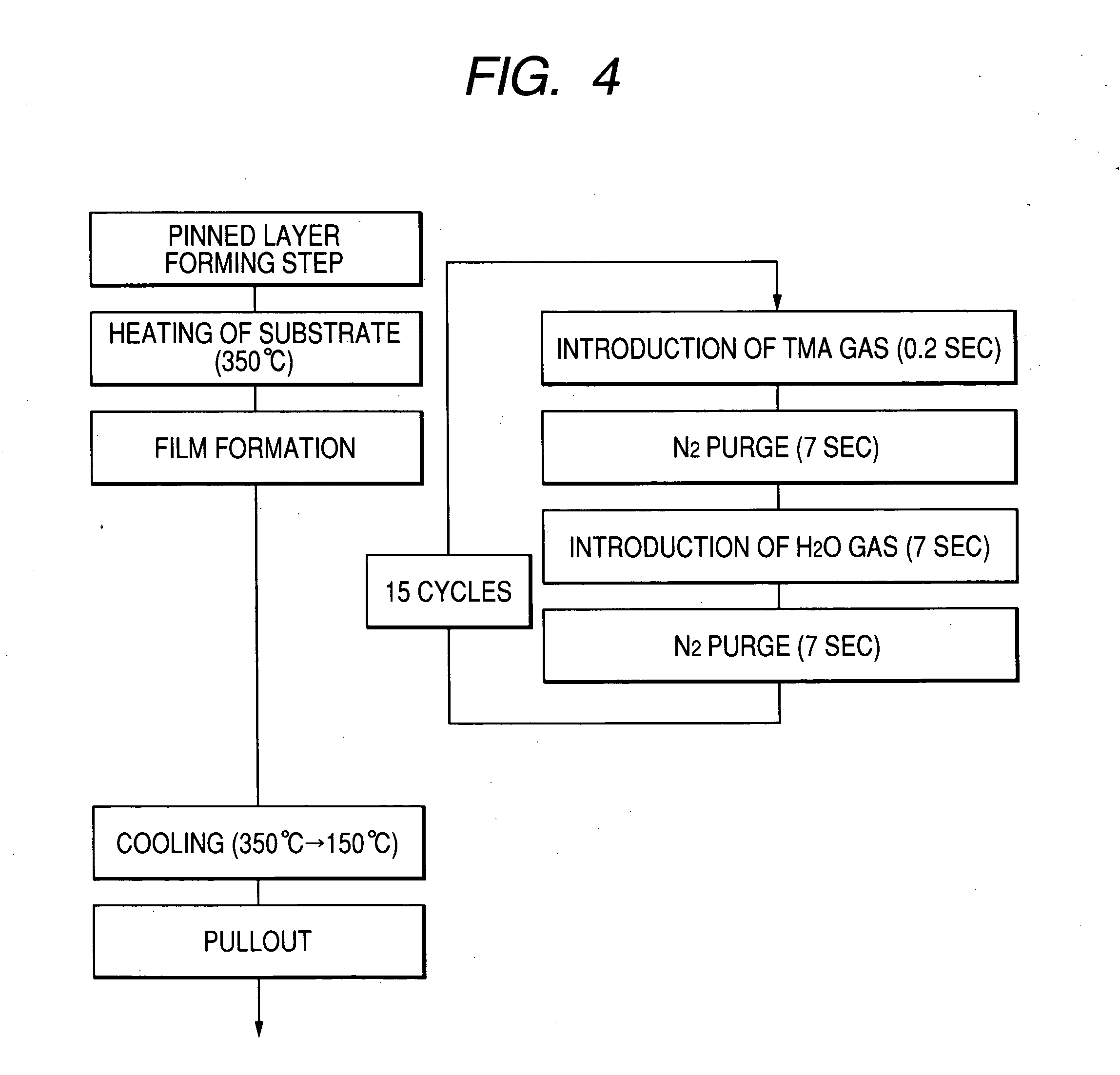Tunnel magnetoresistance device
a tunnel barrier layer and magnetoresistance technology, applied in the manufacture of flux-sensitive heads, instruments, record information storage, etc., can solve the problems of local electric field concentration, inconvenient use, and inability to meet the needs of the user
- Summary
- Abstract
- Description
- Claims
- Application Information
AI Technical Summary
Benefits of technology
Problems solved by technology
Method used
Image
Examples
Embodiment Construction
[0048]FIG. 1 is a section view of a TMR device 1 according to an embodiment of the invention. As shown in this figure, the TMR device 1 has a structure including a lower electrode layer 20, a pinned layer 30, a tunnel barrier layer 40, a free layer 50, and an upper electrode layer 60 successively formed on a substrate 10.
[0049] The substrate 10 may be a silicon substrate on which an insulating layer 11 is formed. The insulating layer 11 serves to electrically isolate the lower electrode layer 20 from the substrate 10.
[0050] The insulating layer 11 is a SiO2 thin film having a thickness of 300 nm formed on the substrate 10 by sputtering method. It is possible to form the SiO2 film by a different method, for example, by thermal oxidation of the silicon substrate 10, or by CVD (Chemical Vapor Deposition) method. The material of the insulating layer 11 is not limited to SiO2.
[0051] The lower electrode layer 20 is a Cr film formed to the thickness of 30 nm on the insulating layer 11 b...
PUM
| Property | Measurement | Unit |
|---|---|---|
| roughness | aaaaa | aaaaa |
| thickness | aaaaa | aaaaa |
| thickness | aaaaa | aaaaa |
Abstract
Description
Claims
Application Information
 Login to View More
Login to View More - R&D
- Intellectual Property
- Life Sciences
- Materials
- Tech Scout
- Unparalleled Data Quality
- Higher Quality Content
- 60% Fewer Hallucinations
Browse by: Latest US Patents, China's latest patents, Technical Efficacy Thesaurus, Application Domain, Technology Topic, Popular Technical Reports.
© 2025 PatSnap. All rights reserved.Legal|Privacy policy|Modern Slavery Act Transparency Statement|Sitemap|About US| Contact US: help@patsnap.com



